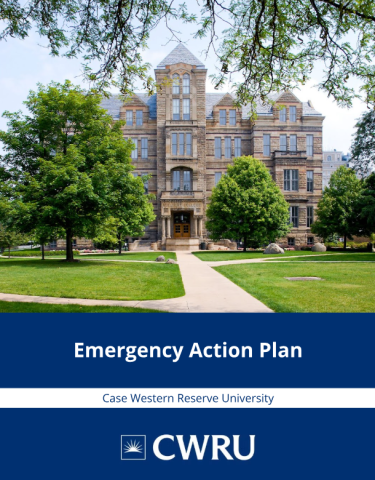The Building Emergency Action Plan (EAP) outlines general procedures for evacuation, shelter-in-place, lockdown, and other protective actions during campus emergencies. Because different situations require different responses, the EAP provides a flexible framework to guide quick, clear decision-making during unpredictable events. While the plan offers important guidance for most emergencies, it may not address every possible scenario.
Each campus building has a Building Appendix that contains information specific to that location, such as evacuation routes, shelter areas, and unique building considerations. Building Coordinators are responsible for keeping their Building Appendix current. Emergency Management is available to assist with reviewing and updating the appendices as needed.
A Building Appendix template is available to ensure consistency across departments. Departments may customize their appendix by removing sections that do not apply or adding details relevant to their operations.
Download the Emergency Action Plan.
Online Building EAP Training
Emergency Management has established a training program that can be accessed via Canvas. To start the Building EAP Training:
- Enroll in the Canvas course.
- Go to "Modules" and watch the "Building Emergency Action Plan Training."
- Go to "Quizzes" to take the "Building Emergency Action Plan Quiz."
- Biomedical Research Building
- Iris S. & Bert L. Wolstein Research Building
- Pathology
- Research Tower
- Robbins Building
- School of Medicine - Allen Memorial Medical Library
- School of Medicine - Samson Pavilion
- Sears Tower
- Wood Building
- Animal Resource Center - Biomedical Research Building
- Animal Resource Center - Wolstein Research Building
First-Year Buildings
- Clarke Tower
- Cutler House
- Cutter House
- Hitchcock House
- Norton House
- Pierce House
- Raymond House
- Sherman House
- Smith House
- Storrs House
- Taft House
- Taplin House
- Tyler House
Second-Year Buildings
- Alumni House
- Clarke Tower
- Glaser House
- Howe House
- Kusch House
- Michelson House
- Staley House
- Tippit House
Upperclass Buildings
- Noble Apartments
- Overlook House
- Stephanie Tubbs Jones Residence Hall
- Triangle Tower 1
- Triangle Tower 2
- Village House 1
- Village House 2
- Village House 3
- Village House 3A
- Village House 4
- Village House 5
- Village House 6
- Village House 7
- 1609 Hazel Apartments
- 1680 Building
- 1716 Building
- 1719 Building
- 1727 Building


